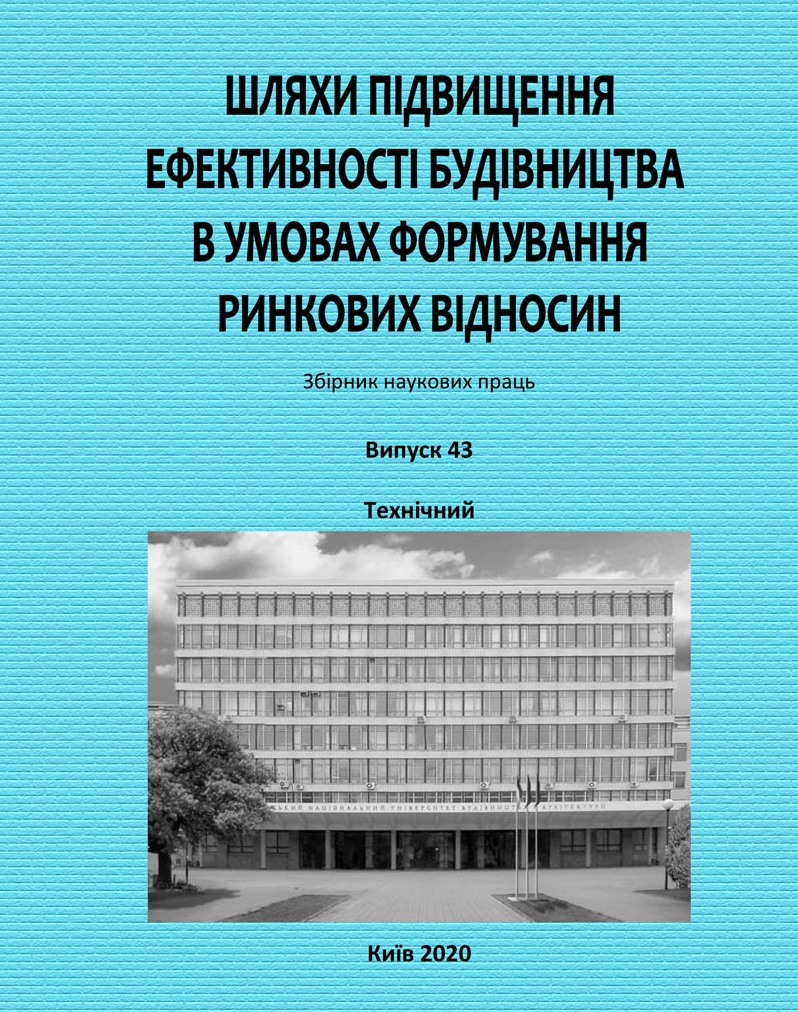The methodology of assigning the reliability index β to determine the safety of structural steel constructions at all operational phases
DOI:
https://doi.org/10.32347/2707-501x.2020.43.86-95Keywords:
steel constructions, reliability index β, safety, normalizationAbstract
In order to assess the operational safety of steel constructions, the paper analyzes the principles of calculating the safety of structural steel constructions with consideration for the reliability index β at all phases of constructions operation and the design fundamentals of the reliability index β for both new constructions (at the design stage) and structural steel constructions in the conditions of the long-term operation.
The task of safety and reliability calculations, first of all, consists in assigning normalized safety parameter values, i.e. normalizing the reliability index, the value of which should be strictly related to the consequence classes (CC), which are determining for setting the reliability coefficients for further calculations while designing the constructions.
The article considers the calculation values β of the reliability index for constructions operated beyond the time limit for operation, with accumulated defects and damages. To improve the mechanism for calculating the reliability index value for the constructions operated beyond the maximum operating limit, with accumulated defects and damages, several tasks were set to determine such values β of the reliability index below which the construction is no longer considered to be operational and to define the reliability index values β for possible performance of renovation works (reconstruction, refurbishment) to strengthen and extend the remaining structural lifetime.
Thus, emphasizing all of the aforementioned, the main conclusions to the article should be specified: at the stage of solving the issue of calculating the reliability index for structures being operated over the projected service life, with damages and initial defects accumulated during the operation period, it is required to perform their review and determine two main criteria for solving the issue of determining the reliability index, namely: to set such values of the reliability index below which the structure will be no longer operational, to define and set such values of the reliability index at which it is possible to carry out renovation works on steel structures, their reconstruction or repair.
Considering the possibility of changing the reliability index compared to a new structure, given that the residual service life may be shorter than the design one, taking into account the economic factors and factors of probability of losing a person’s life, setting of such reliability index values is necessary for further possibility of the service life extension of a structure and determination of its residual life.
References
ISO 2394:2015. International standard. General principles on reliability for structures. ISO 2015. Pages 112.
Rzhanitsyn A.R. The theory of calculating building construction for reliability. - M.: Stroyizdat, 1978.- 239 p.
DSTU-NB B.1.2-13: 2008. (EN 1990: 2002, IDN). System of reliability and safety in construction. Attitude. Fundamentals of structural design. Kyiv, Minregionstroy of Ukraine., 2009. - 81p
Eurocode 0: ENV 1990:2002+A1. Basic of structural design. CEN, Brussels, 2002. 116 pages.
ISO 13822:2010. Bases for design of structures – Assessment of existingstructures. ISO 2010. Pages 44.
DBN B.1.2-14: 2009. System of ensuring reliability and safety of construction objects. General principles for ensuring the reliability and structural safety of buildings, structures, structures and foundations. Kyiv, Minregionbud of Ukraine, 2009.-30p.
DSTU-NB V.2.3-23: 2009. Transport facilities. Guidance on the assessment and prediction of the technical condition of road bridges. Kiev Minregionbud of Ukraine. 2009. - 217 p. (Scientific adviser Lantuh-Lyashchenko A.I.)
A methodology for determining the risks and their acceptable levels for declaring the security of high risk entities. - Ministry of Labor and Social Policy of Ukraine. Order No. 637 of December 4, 2002.
Risk assessment in engineering. Principles, system representation and risk criteria. JCSS – Joint Committee on Structural Safety. Edited by M.H. Faber. – June 2008. Pages 35.
Background documents on risk assessment in engineering. Document #1. Theoretical framework for risk assessment and evaluation. JCSS (Joint Committee on Structural Safety). I. B. Kroon, COWI and M.A. Maes. – November 2008. Pages 14.
Steenbergen R.D.J.M. Safety philosophy for existing structures and partial factors for traffic loads on bridges. R.D.J.M. Steenbergen, A.C.W.M. Vrouwenvelder. HERON Vol. 55 (2010) No. 2. Pages 123-140.
Holicky M. Determination of target safety for structures. M. Holicky, D. Diamantidis, M. Sykora. 12th International conference on application of statistics and probability in civil engineering. ICASP12. Vancouver, Canada. 2015. pp. 1-9.
Diamantidis D. Risk and reliability acceptance criteria for civil engineering structures. D. Diamantidis, M. Holicky, M. Sykora. Structural reliability Conference paper. Ostrava, Czech Republic. 2016. Pages 11.
Vrouwenvelder A.C.W.M.T. Reliability based structural design. Safety, Reliability and Risk Management. 2014. pp. 45-53.
Downloads
How to Cite
Issue
Section
License
Copyright (c) 2020 S. Kolesnichenko, Y. Selyutyn, I. Chernykh, K. Mnacakanyn

This work is licensed under a Creative Commons Attribution 4.0 International License.
Authors who publish with this journal agree to the following terms:
- Authors retain copyright and grant the journal right of first publication with the work simultaneously licensed under a Creative Commons Attribution License that allows others to share the work with an acknowledgement of the work's authorship and initial publication in this journal.
- Authors are able to enter into separate, additional contractual arrangements for the non-exclusive distribution of the journal's published version of the work (e.g., post it to an institutional repository or publish it in a book), with an acknowledgement of its initial publication in this journal.
- Authors are permitted and encouraged to post their work online (e.g., in institutional repositories or on their website) prior to and during the submission process, as it can lead to productive exchanges, as well as earlier and greater citation of published work (See The Effect of Open Access).

